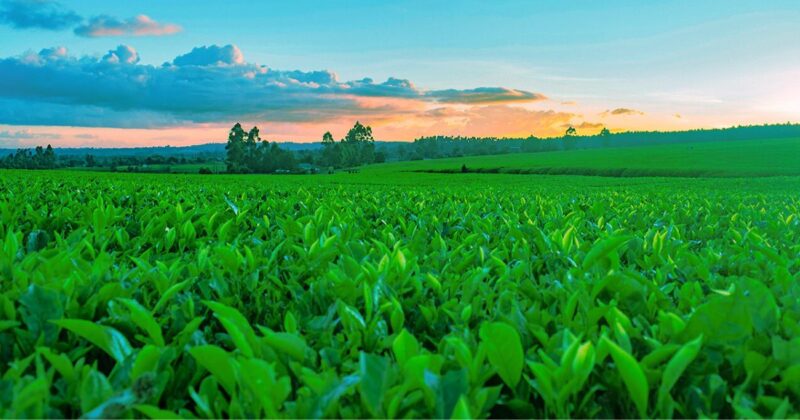Hi! It’s konkaz (@konkazuk).
The book would like to introduce today is “REGENESIS“, written by George Monbiot — a British journalist, environmental and political activist, and author.
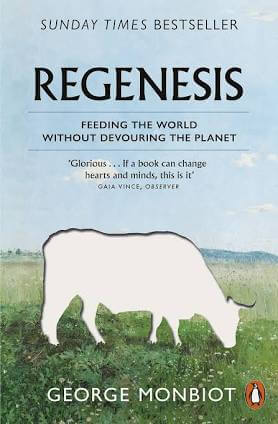
This book is all about soil… and you might be thinking, like, ‘So what? What does soil have to do with me?’ But trust me — this stuff matters more than you think.
While we enjoy the comforts of a competitive society, we’ve gradually lost touch with the natural world. However, behind the scenes, a serious crisis that affects our very survival is quietly unfolding.
This book explores one of the root causes of climate change and is a must-read not only for those in agriculture, but for everyone today.
This book is packed with information, so in this article, I’ll be picking out the parts that stood out to me personally.
- Who is George Monbiot?
- Did you know tree roots act like guts?
- Is there really a food shortage? Absolutely not.
- How livestock poop is killing our rivers
- Why have modern humans become so addicted to meat?
- Why intensive farming is a growing threat
- The proportion of mammals on earth
- Corporate monopolies destroy biodiversity
- No tilling the soil?
- Hope for the future
Who is George Monbiot?

Let’s start with the author.
George Monbiot is an environmental activist, journalist, and writer from the UK.
He’s been writing for The Guardian for years, tackling major issues like climate change, the loss of biodiversity, and the relationship between capitalism and the environment. His articles are read all over the world.
Some of his major works include ‘The Invisible Doctrine‘ and ‘Heat‘.
In ‘Regenesis’, the book I’ll be talking about today, he focuses on how we farm and what we eat — arguing that we need to completely rethink agriculture if we want a sustainable future.
Did you know tree roots act like guts?

At the beginning of the book, George explains that soil and plant roots function in a similar way to the human gut.
🌲 The rhizosphere lies outside the plant, but it is as essential to its health and survival as the plant’s own tissues. It is, in effect, the plant’s external gut.
The soil surrounding plant roots is known as the “rhizosphere“. In this zone, the environment is shaped by substances released from the roots and other biological activity, leading to the formation of specific bacterial communities.
These microbes help supply nutrients to the plant and protect it from harmful pathogens.
Plants have the rhizosphere, we have guts — and both are packed with bacteria. In both systems, these microbes break down organic matter and turn it into compounds that are easier to absorb. When you think about it, they work in surprisingly similar ways.
One part that really stuck with me was about the oligosaccharides found in human breast milk.
For a long time, scientists couldn’t understand why mothers would produce sugars that babies couldn’t even digest. But now we know — those sugars exist not for the baby directly, but to feed the gut bacteria that grow alongside the baby.
On top of that, many antibiotics used in modern medicine were developed from bacteria found in the rhizosphere.
The soil, in other words, is alive — and within its balanced ecosystem, it carries out processes similar to digestion and metabolism.
But modern agriculture—with its use of chemical fertilisers and tilling—has been slowly destroying this delicate system, bringing us dangerously close to ecological collapse.
Is there really a food shortage? Absolutely not.
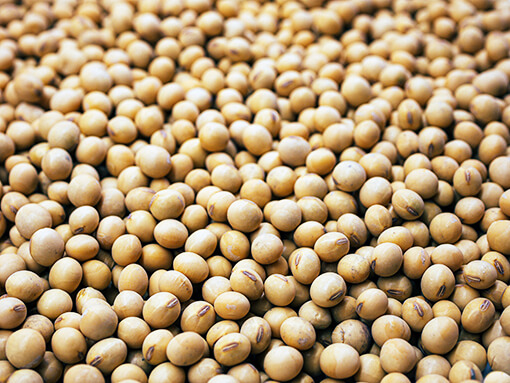
It is often said that many people around the world are suffering from hunger, but the real problem isn’t actually a food shortage.
Global food production has steadily increased over the past half-century — far outpacing population growth.
So… how did we end up here?
To get straight to the point, the core issue is that food isn’t being distributed fairly — largely due to excessive meat consumption in developed countries.
First, take a look at where the world’s current grain production is actually ending up.
⚫ livestock feed : about 50%
⚫ biofuels : about 10〜15%
⚫ human consumption : about 35〜40%
As it stands, about half of the world’s grain production is used as feed for livestock such as cattle, pigs, and chickens.
George mentions that the true population crisis lies not in the rising number of humans, but in the soaring number of livestock. And he’s absolutely right. According to UN projections, global meat consumption is expected to increase by 120% by 2050 compared to levels in 2000.
And these animals need to be fed!
Wealthy countries, including the UK, say they produce most of the meat, eggs, and dairy consumed domestically, but this is only possible because they import feed from other countries.
Much of this feed is imported in the form of soybeans from South America, and the expansion of soybean production is believed to be causing devastating damage to tropical rainforests, wetlands, and savannas.
How livestock poop is killing our rivers
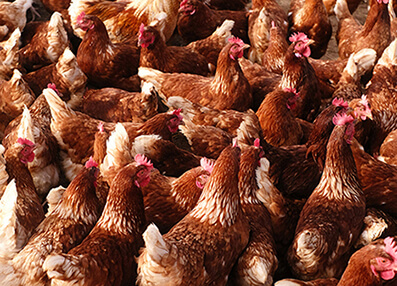
Surprisingly, a major cause of the serious river pollution problem in modern society is actually our excessive meat consumption as well.
Just walking around London, you can see fast food shops everywhere—especially fried chicken places. Behind this is the presence of intensive chicken farms supplying the huge amounts of chicken needed.
Some of you might wonder, “But how exactly does eating too much meat lead to river pollution?”
Here’s a brief summary of what George explains about that question…
First, large amounts of nutrients are brought into the area as chicken feed.
➡︎ Chickens eat this feed and excrete it as manure.
➡︎ The manure is spread over farmland in large quantities, but the soil can’t absorb all the nutrients, leaving some excess.
➡︎ Rain washes the surplus phosphates and nitrates from the manure into nearby rivers.
➡︎ Algae in the rivers absorb these nutrients and grow explosively.
➡︎ At night, the excessive algae consume a large amount of oxygen through respiration, causing oxygen levels in the water to drop drastically by dawn, which suffocates the fish.
Therefore, you can understand that the growth of algae matches the increase in the number of chicken farms.
It’s said that brown and cloudy rivers have become normal in the UK, and the modern system of producing cheap, mass meat is a major cause of this water pollution.
Furthermore, the government apparently directs environmental officers not to crack down on dairy farms in the name of economic development, leaving little hope for improvement.
Why have modern humans become so addicted to meat?
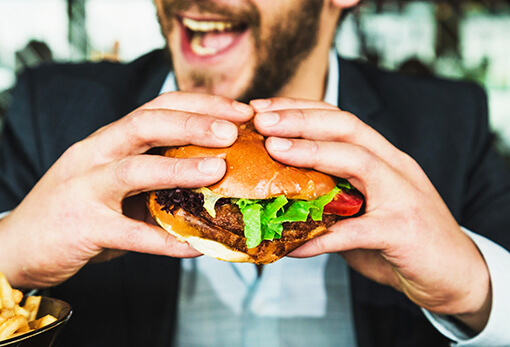
The roots of modern society’s addiction to meat can be traced back to the post-1960s era, when rapid population growth and urbanisation created a demand for mass food production.
With the rise of supermarkets and fast food, consumers began to demand large quantities of cheap meat.
This gave rise to intensive animal farming — a system designed to raise large numbers of animals within confined spaces in order to maximise productivity.
As a result, meat shifted from being a luxury item to an everyday food.

Especially with the global expansion of fast food chains like McDonald’s, meat became easily accessible, affordable, and available at any time.
In addition, fast food and processed meats are scientifically crafted to make our brains feel good — which means the more we eat, the more we want. This creates a cycle of addiction that affects nearly everyone.
On top of that, since the Industrial Revolution, being able to eat a lot of meat has been seen as a sign of wealth and progress among the middle and upper classes in Europe and the U.S. As this mindset spread through globalisation, it influenced other parts of the world too.
Why intensive farming is a growing threat
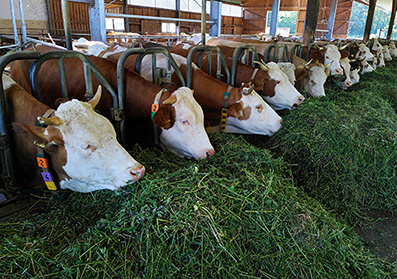
In intensive animal farming, animals are kept in crowded conditions where they can’t behave naturally, which often leads to poor hygiene and stress-related illnesses.
As a result, antibiotics are often overused.
Farm animals are sometimes given antibiotics even when they’re not sick—just to stop infections from breaking out. Some antibiotics are also used to make them gain weight faster so they can be sent to market sooner, using less feed.
Meanwhile, soil bacteria are constantly engaged in fierce battles, using antibiotics to fend off or destroy their rivals. Over time, they have evolved defensive mechanisms to protect themselves against newly emerging harmful chemicals.
According to the book, it’s estimated that around 58% of the antibiotics given to livestock are excreted.
When this waste is stored in soil, the bacteria living there are forced to evolve in order to survive exposure to the antibiotics.
In this way, bacteria in the soil progressively develop antibiotic resistance by interacting with microbes found in livestock waste.
And what’s alarming is that these antibiotic-resistant bacteria, their genes, and even the antibiotics themselves can be absorbed through the roots of crops — eventually ending up in the parts we eat.
👉 Out of the 27 classes of antibiotics used in livestock, 20 are also used in human medicine — including some critically important drugs known as the “last line of defense.
In other words, what this means is that…
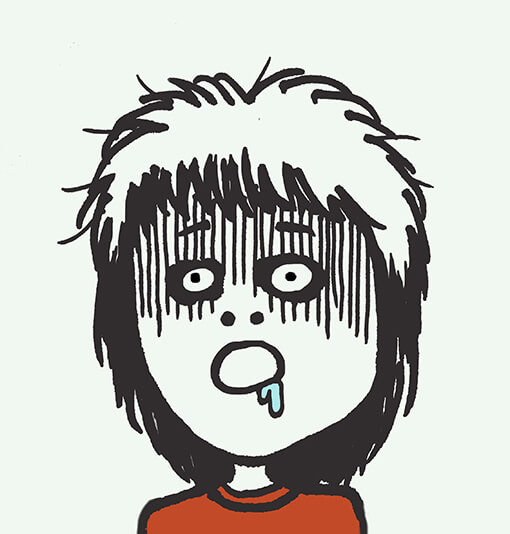
when we get sick and need antibiotics, they might not work — because drug-resistant bacteria may already be inside our bodies!
According to estimates, drug-resistant bacterial infections kill around 25,000 people every year in Europe, and the death toll worldwide is said to be in the hundreds of thousands.
For these reasons, scientists and medical professionals have been urging governments to take action against this threat; however, it is forecasted that antibiotic use in farm animals will grow by another 66% in the coming 15 years. 💦
The proportion of mammals on earth
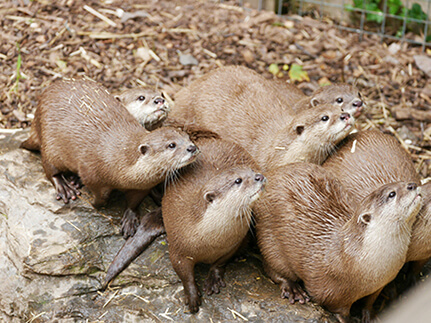
What hit me hardest among the data George shares in the book was the breakdown of mammal populations.
When we compare the world’s mammals by biomass, the numbers are shocking:
👉 Humans make up 36%, livestock 60%, and wild animals only 4%.
In other words, humans and the animals we raise for food now make up the vast majority of the world’s mammals.
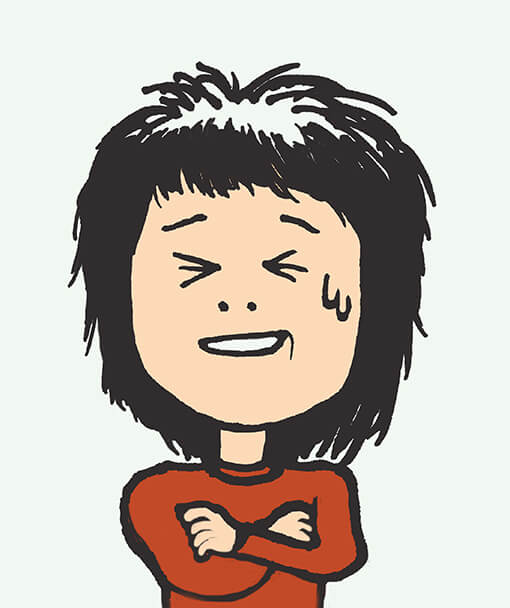
If we think we’re living in harmony with nature, we’re seriously mistaken. In reality, we’ve consumed most of it.
Naturally, the more land we occupy, the more we reduce the space available for other living creatures and the ecosystems needed to keep the planet in balance. In areas used for raising livestock in particular, large predators are often killed.
Animal agriculture is the main reason why these animals are disappearing — plain and simple!!!
Another surprising fact is how EU farm subsidies work.
To receive subsidies, land must be in an “agriculturally usable condition” — but this doesn’t necessarily mean food is actually being produced on that land.
In some countries, full subsidies can be granted even if nothing is being produced — as long as the land is kept in an “agriculturally usable condition,” which often means leaving it nearly empty.
If land includes areas that could serve as habitats for wildlife — such as regenerating forests or ungrazed wetlands — it may no longer qualify for the EU’s main subsidy programme, the Basic Payment Scheme.
That’s why many farmers end up clearing these areas, just to keep the payments coming.
Seriously, it’s completely bonkers!
Corporate monopolies destroy biodiversity
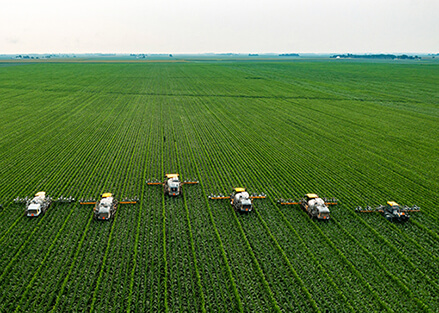
The shrinking biodiversity among mammals, as previously mentioned, is part of a broader trend, and similar declines are also happening among microbes, insects, and plant species, including staple crops and cereals.
Globalisation has enabled goods to be distributed around the world, leading to increasingly similar diets across countries. As a result, agricultural practices have also become more uniform — and this is now causing serious problems.
George warns that monoculture, where only crops like soy, wheat, or maize are grown in vast quantities, simplifies ecosystems and makes them more vulnerable to diseases and climate change.
When one type of crop gets hit by disease, it can happen everywhere at once — and that’s how a global food crisis can begin. And since we ship things around the world so quickly now, we also end up spreading plant diseases just as fast.

It is said that the widespread use of the same herbicides to grow identical crops worldwide has led to the rise of herbicide-resistant ‘superweeds’, which are now appearing all over the globe.
Even more alarming is the reality that, alongside the homogenisation of diets, farming methods have also become standardised, and big companies are using that to speed up globalisation and crush smaller rivals one after another.
Big firms that sell “universal goods” like seeds, machines, and pesticides end up controlling the market, gaining political power, and using their money to push governments into making trade deals that work for them.
They keep getting patents on things like seeds, farm animals, pesticides, and machines, and with mergers and takeovers allowed, they get even more control over their products.
It is estimated that about 90% of the world’s grain trade is controlled by just four huge companies. 💦
No tilling the soil?
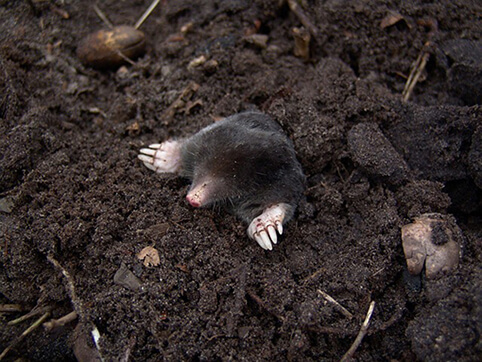
For most people, the first thing that comes to mind about agriculture is “plowing the land”.
However, George points out in his book that the very act of plowing actually destroys soil life and contributes to climate change and biodiversity loss.
The act of cultivating the soil mainly affects these three things.
⚫ The Network of Soil Bacteria
The soil contains many important organisms, such as fungal hyphae connected to roots, but tilling breaks these networks, making it harder for plants to absorb nutrients and increasing their susceptibility to diseases.
⚫ Soil Structure
Although tilling may seem to soften the soil, it actually destroys natural pores created by microbes and earthworms, causing the soil to compact more easily. This reduces water infiltration, leading to root rot and drought in a vicious cycle.
⚫ Release of CO₂ into the Atmosphere
Soil naturally stores a large amount of carbon in organic matter from roots, fallen leaves, and dead plants and animals. But tilling introduces oxygen, activating bacteria that rapidly break down this carbon, releasing CO₂ into the atmosphere, thus accelerating global warming.
Based on all this, George calls for a fundamental reconsideration of traditional farming methods that assume tilling is normal, insisting that “farming without damaging the soil is the key to healing the Earth“.
There is a method called “no-till farming”, which involves not turning over the soil but instead protecting it by covering it with dead grass or leftover crops. Additionally, specialised machines are used to plant seeds by making small holes in the soil instead of plowing with a tractor.
This way, it is possible to cultivate crops while preserving the soil ecosystem and relying on nature’s own processes.
Hope for the future
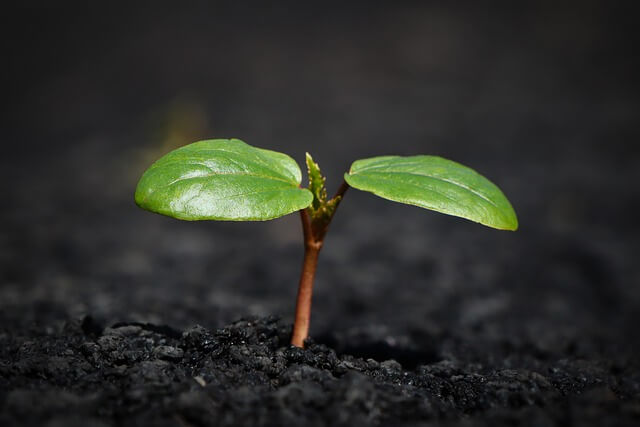
George emphasises the need for a fundamental change in current agriculture, and he focuses on technologies that use bacteria to produce nutrients like protein without relying on fields or pastures.
While it takes months for crops to grow, bacteria cultivated in tanks can double every three hours. If the conditions are right, they can even be harvested up to eight times a day.
If this technology becomes widespread, we could enter an era where much of our food is produced farmfree—without the need for traditional farmland.
Because powdered bacteria can be made anywhere with access to electricity, there’s huge potential, especially in poorer countries where renewable energy is expected to grow.
Plant-based meat alternatives already place a significantly lower burden on the environment compared to animal meat. One study found that they produce 34% fewer greenhouse gas emissions than chicken, and a staggering 93% less than beef.

Why? Because instead of feeding soy and other crops to animals and then eating the meat, we eat the plants directly.
This technology could slash our resource use — requiring only 60% of the land used for chicken and just 2% for beef. Water, fertilisers, and pesticides? We’d need far, far less.
And as we replace meat with plant protein, and plant protein with microbial protein, farmfree foods could become the smarter choice: cheaper, better quality, and healthier too.
And most importantly, if we can stop deforestation and pasture expansion — and build a sustainable food system that doesn’t rely on livestock — then ecosystems like forests, wetlands, and grasslands can begin to recover. Biodiversity will return, and nature can start to heal.
Thanks for staying with me through to the very end.
Until next time,
konkaz
*You can read this blog post in Japanese from the link below.
👉 ジョージ・モンビオの『REGENESIS』とは?食と農業の未来を描く必読書

